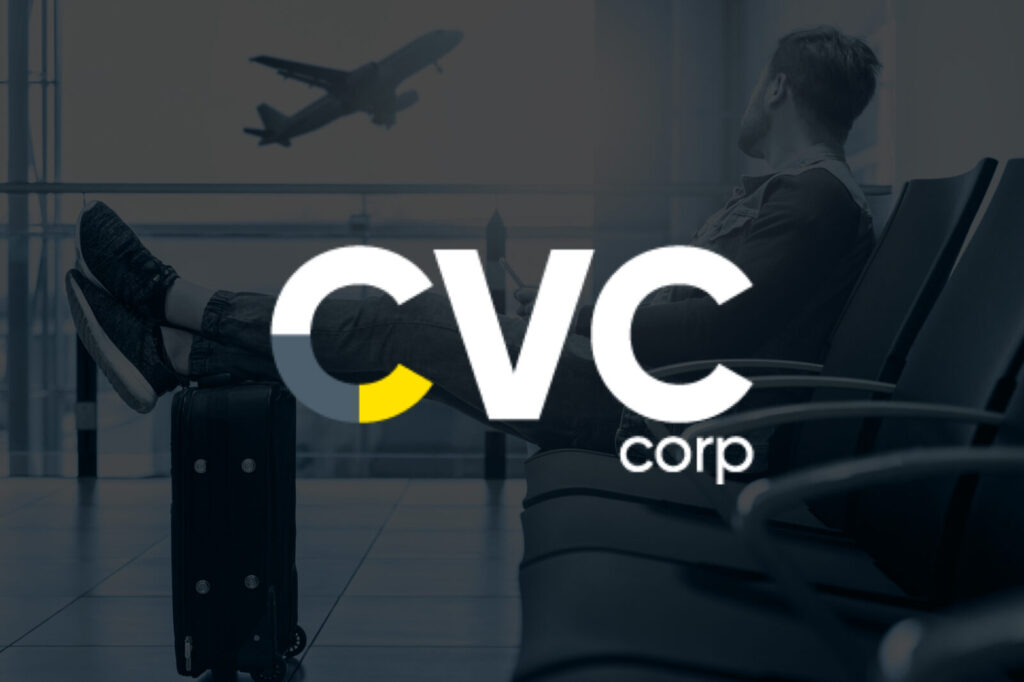
CVC Corp is the largest travel group in Latin America. It comprises business units from different segments in the tourism sector, such as vacation and leisure travel, corporate and course-related travel, and cultural exchange abroad.

The company’s expansion made the management of IT processes quite complex, with each business unit having its own call center with different channels and tools so it was not easy for internal users to find the correct channel for a given project request and IT processes. The challenge for CVC was to adhere to modern management of its services, working collaboratively, seeking to consolidate service channels, and improving the experience of the end-users (stores and franchisees) and internal IT teams.
In 2021, CVC Corp initiated the IT Service Management (ITSM) project to consolidate IT service channels and select Atlassian tools (Jira Software, Jira Service Management, and Confluence) for this initiative. The decision to opt for Atlassian tools was driven by their technical alignment with the company’s requirements, their status as a leading company in the sector, and, notably, their popularity among employees, who favored them over other previously used tools.
Through this initiative to streamline processes, CVC Corp achieved a significant enhancement in user experience, simplifying the interaction channels with IT and optimizing overall operational efficiency by centralizing all processes within a single tool. A key advantage lies in the traceability of processes, allowing the association of IT incidents with changes in the environment originating from specific projects. This is complemented by integrated indicators and automatically recorded records within the tools.
CVC Corp encountered a notable challenge in instigating a cultural shift, given that many teams were accustomed to specific tools and processes. The support from e-Core was crucial to overcome this obstacle, we collaborated with the CVC team to implement a comprehensive change management plan for internal employees and company franchisees. This plan addressed issues such as navigating changes between processes and tools.
To facilitate a successful transition, e-Core implemented proofs of concept and conducted demonstrations for employees, illustrating both the migration process of Atlassian solutions and tools and the associated projects. Throughout the entire project lifecycle, from initiation to tool unification, the e-Core and CVC Corp teams collaborated seamlessly, leading to a transformative shift in organizational culture and an enhancement in processes.

More Visibility
The initial advantage resulting from the evolution of IT Service Management (ITSM) for the IT team was enhanced visibility into all processes. Given CVC’s intricate technological landscape, encompassing numerous individuals and multiple entities reliant on technology services, this transformation has fortified the IT environment. Consequently, the system has become more dependable and agile in catering to users, thereby enabling them to deliver an improved service to end customers.
Another positive outcome is related to compliance and regulatory matters. Although there isn’t a specific regulation in the tourism sector, CVC is a publicly traded company listed on the stock exchange. This necessitates adherence to a certain governance framework. The company undergoes external audits, and the technology department has its processes consistently evaluated to maintain a reliable IT environment. Therefore, the unified IT Service Management (ITSM) platform also provides the necessary support for regulatory concerns.
CVC recently upgraded its standard tools to premium to expand the IT services supported by the Atlassian platform, thereby accelerating the company’s growth and the maturation of IT processes.
This evolution of IT Service Management (ITSM) contributes significantly to CVC’s business by enabling the identification, elimination, and prevention of issues that could impact the end customer’s experience. With a more organized IT infrastructure, business units can report problems that are promptly identified and located through a unified and accessible platform. The IT team can now communicate the severity of issues without leaving users in the dark, ensuring swift problem resolution.
“The keyword here is visibility! We now have a consolidated view of our environment, which means we can assess the scale of actions, understand the volume of service requests, identify the main bottleneck in our service request intake – in short, these are the areas where we need to invest to reduce and optimize team efforts. Therefore, the more structured our IT department becomes, the more agile we can be in addressing demands based on their criticality and urgency. This is not only beneficial for our customers but also supports our entire business chain, including regulatory compliance. With well-structured processes, we achieve traceability of everything happening in our environment, enabling swift notification and targeted efforts to resolve issues for those on the front lines.”
Kleber Nagamine
IT Governance Manager







